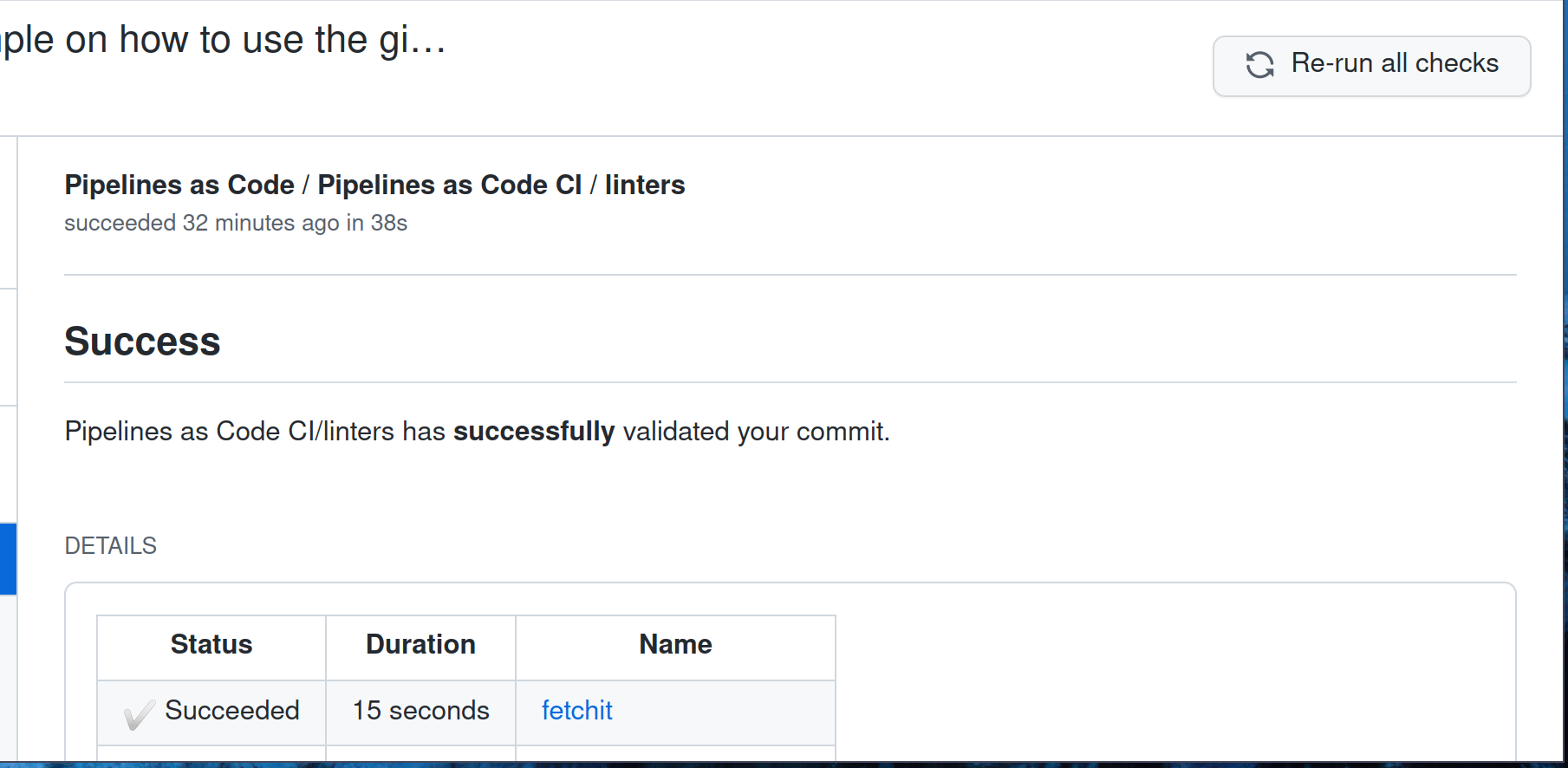Running the PipelineRun #
Pipelines-as-Code (PAC) can be used to run pipelines on events such as pushes
or pull requests. When an event occurs, PAC will try to match it to any
PipelineRuns located in the .tekton directory of your repository
that are annotated with the appropriate event type.
The PipelineRuns definitions are fetched from the .tekton directory at the
root of you repository from where the event come from, this is unless you have
configured the provenance from the default
branch on you Repository
CR.For example, if a PipelineRun has this annotation:
pipelinesascode.tekton.dev/on-event: "[pull_request]"
it will be matched when a pull request is created and run on the cluster, as long as the submitter is allowed to run it.
The rules for determining whether a submitter is allowed to run a PipelineRun on CI are as follows. Any of the following conditions will allow a submitter to run a PipelineRun on CI:
The author of the pull request is the owner of the repository.
The author of the pull request is a collaborator on the repository.
The author of the pull request is a public or private member of the organization that owns the repository.
The author of the pull request has permissions to push to branches inside the repository.
The author who initiated the pull request is identified in an
OWNERSfile found in the main directory of the branch that is set as the default branch on GitHub or your other service provider.The OWNERS file need adheres to a specific format, similar to the Prow OWNERS file format (available at https://www.kubernetes.dev/docs/guide/owners/), with the exception that we do not yet support the use of
OWNERS_ALIASES.When you include contributors in the
approversorreviewerssections, Pipelines-as-Code enables those contributors to execute a PipelineRun listed in the OWNERS file.For instance, if the
approverssection of your OWNERS file in the main or master branch of your repository appears as follows:approvers: - approvedthen the user with the username “approved” will be granted permission.
If the pull request author does not have the necessary permissions to run a
PipelineRun, another user who does have the necessary permissions can comment
/ok-to-test on the pull request to run the PipelineRun.
If you are using the GitHub Apps and have installed it on an organization, Pipelines-as-Code will only be triggered if it detects a Repo CR that matches one of the repositories in a URL on a repository that belongs to the organization where the GitHub App has been installed. Otherwise, Pipelines as Code will not be triggered.
PipelineRun Execution #
The PipelineRun will always run in the namespace of the Repository CRD associated with the repo that generated the event.
You can monitor the execution using the command line with the tkn pac CLI :
tkn pac logs -n my-pipeline-ci -L
If you need to show another pipelinerun than the last one you can use the tkn pac logs command and it will ask you to select a PipelineRun attached to the
repository :
tkn pac logs -n my-pipeline-ci
If you have set-up Pipelines-as-Code with the Tekton Dashboard or on OpenShift using the OpenShift Console. Pipelines-as-Code will post a URL in the Checks tab for GitHub apps to let you click on it and follow the pipeline execution directly there.
Restarting the PipelineRun #
You can restart a PipelineRun without having to send a new commit to your branch or pull_request.
GitHub APPS #
If you are using the GitHub apps method, you have the option to access the “Checks” tab where you can find an upper right button labeled “Re-Run”. By clicking on this button, you can trigger Pipelines-as-Code to respond and recommence testing the PipelineRun.
This feature enables you to either rerun a particular pipeline or execute the entire suite of checks once again.
